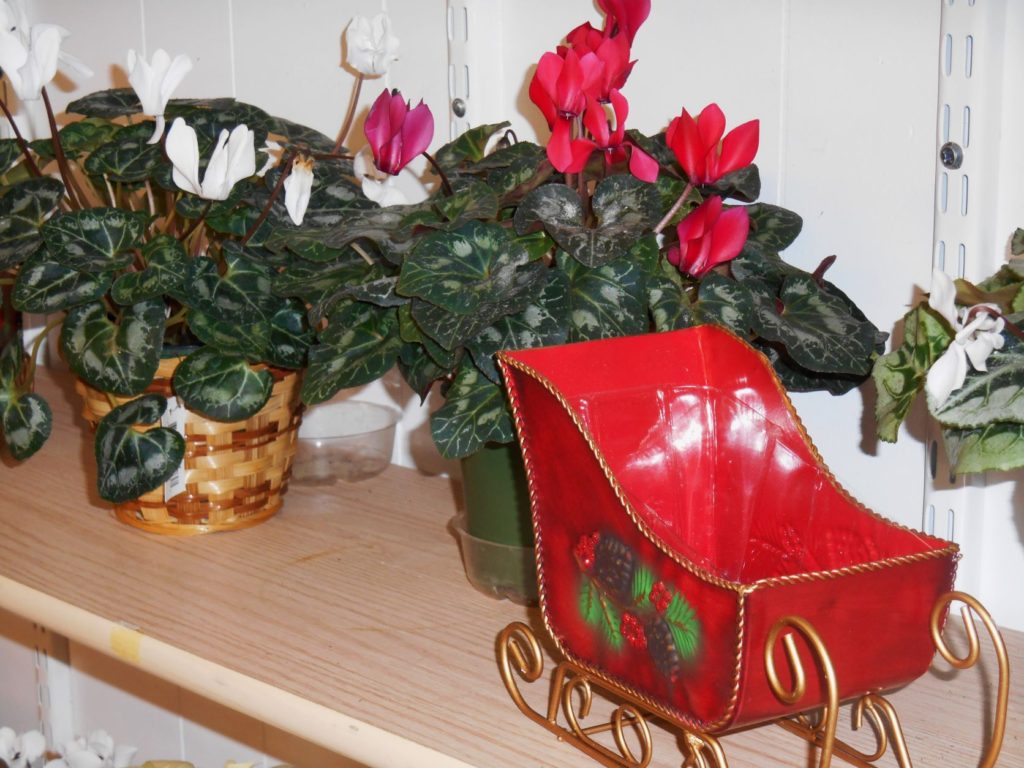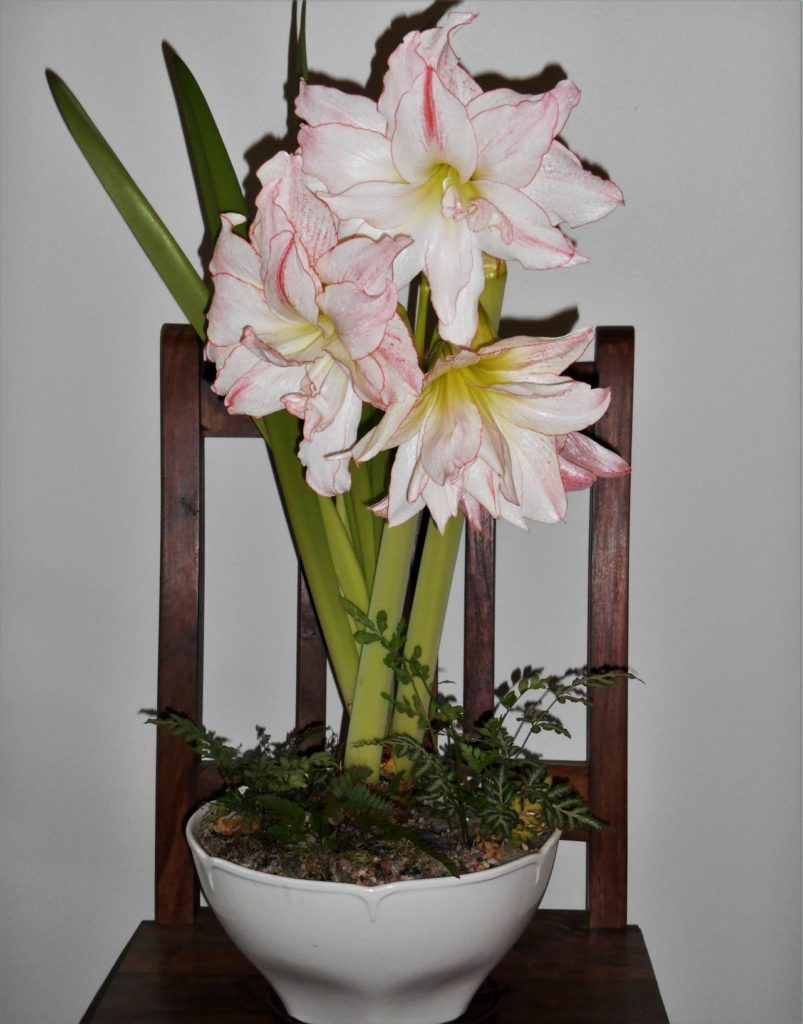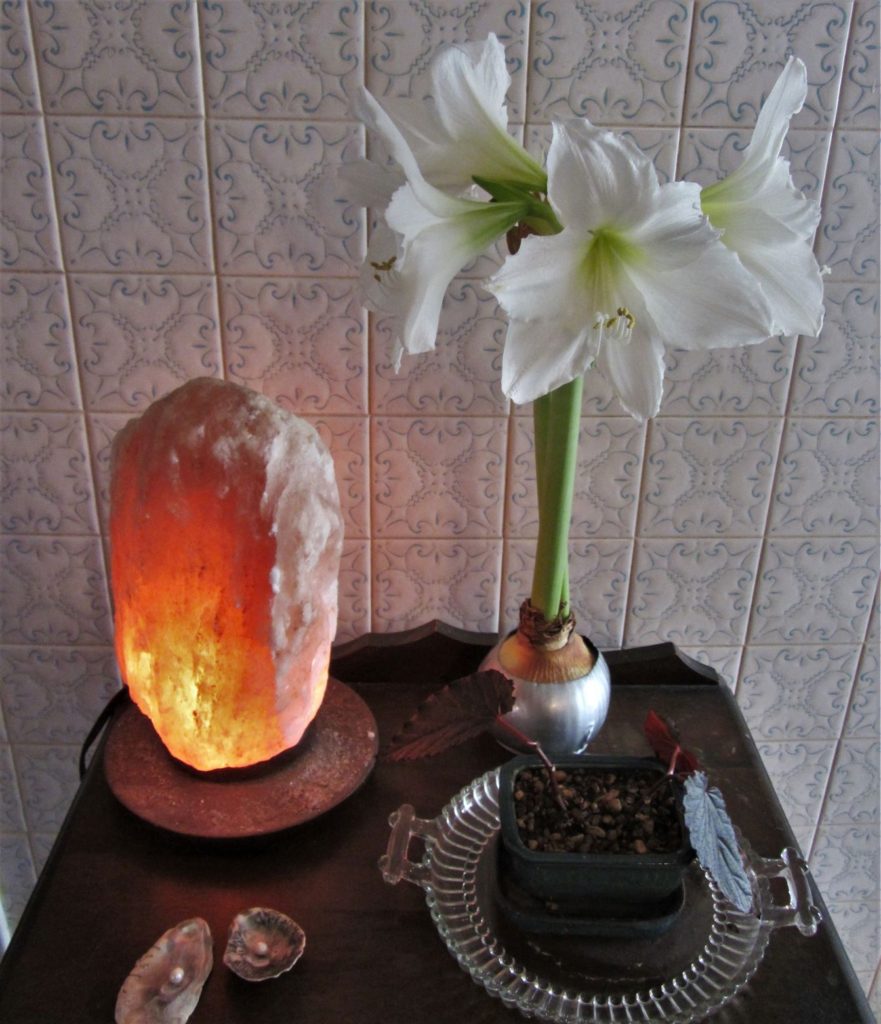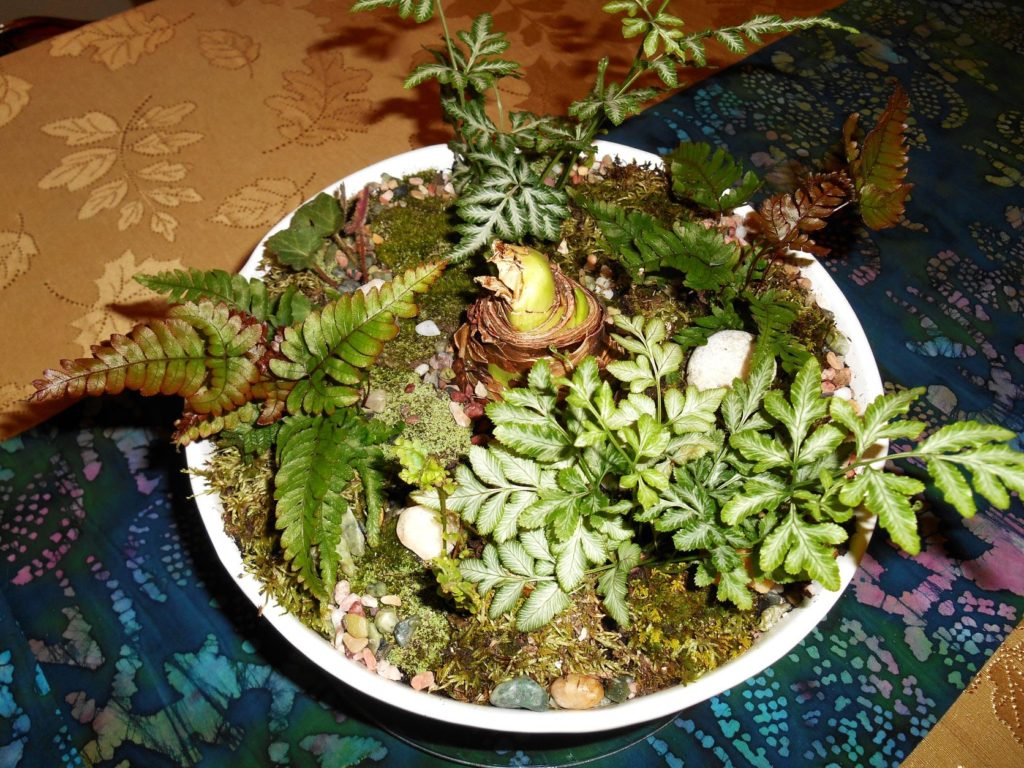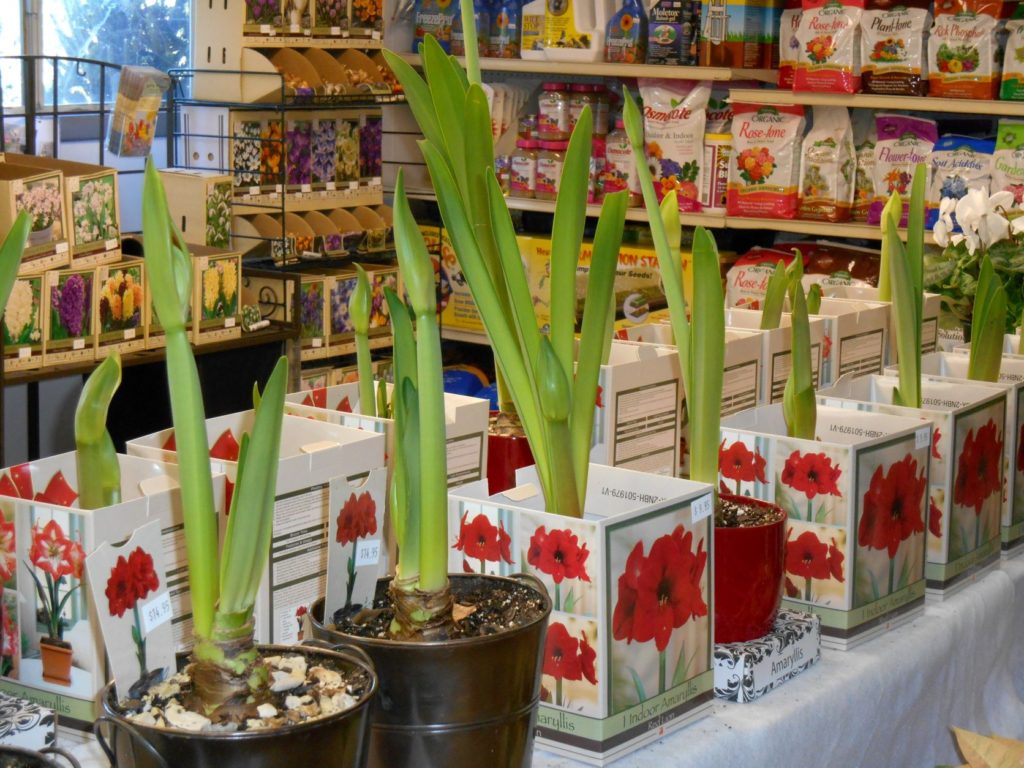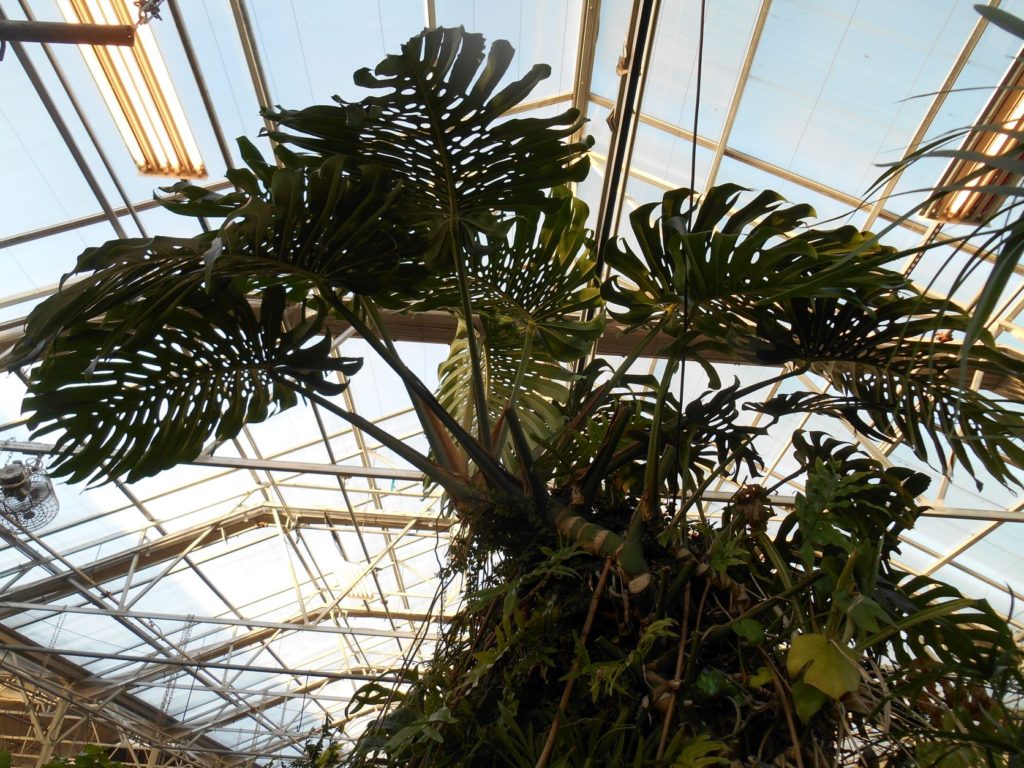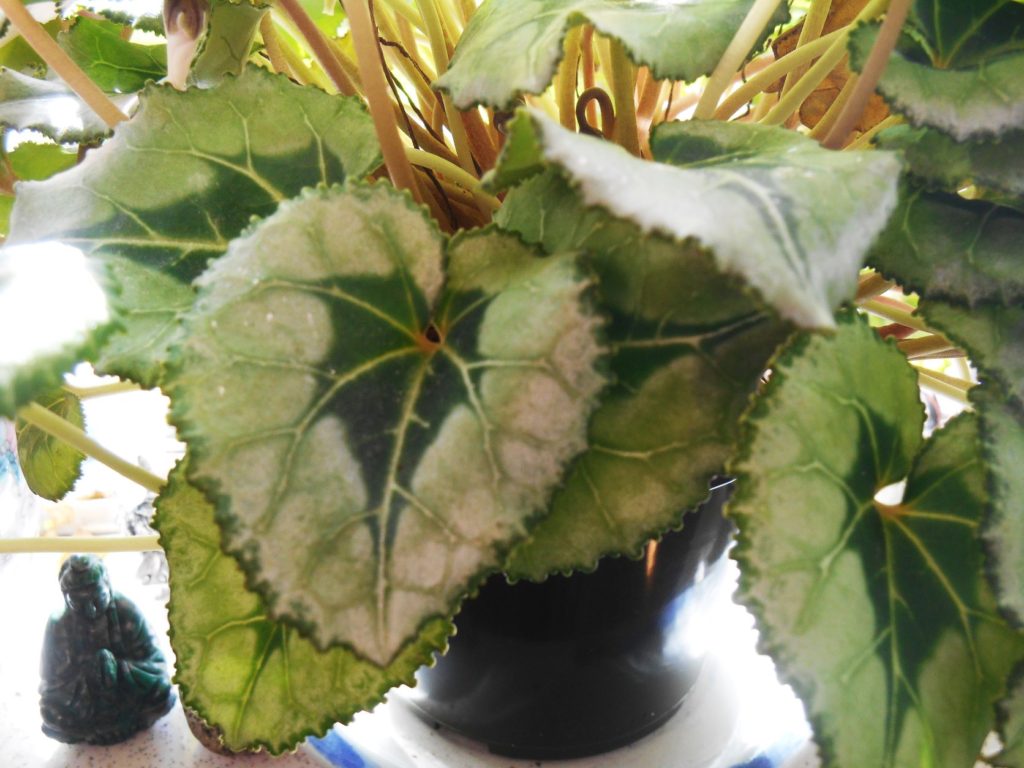Tips for Growing Holiday Plants
Did Santa bring you a potted plant for Christmas? Or maybe a neighbor dropped by with a beautiful potted something to spread a bit of good cheer your way? Or do you always linger at the rack of holiday plants and wonder which ones you might be able to keep alive for a few weeks this winter?
December and January are a great time to shop for plants. And this week, especially, after Christmas, you’ll find some good values on plants that will delight you and brighten your home all winter. Some are tender and need indoor care through the winter, but others can go right out into a pot by your front door, or into the garden, and delight you for many years to come.
Let’s take a look at some of the popular plants for gifting and winter decorating, and learn tips to properly care for each. It is much easier to keep them alive than you might imagine.

A West Coast native, lemon cypress is a newly popular holiday plant that may be grown outside in our climate. Here, it grows with Violas at the Williamsburg Botanical Garden.
Shrubs
Lemon Cypress, also known as Monterey Cypress ‘Goldcrest,’ or Cupressus macrocarpa ‘Goldcrest’, is a West Coast native evergreen tree hardy in Zones 7-10. You may see them potted and wrapped in a wide ribbon, topped with a single ornament displayed at a favorite grocery store each December. I suppose they are supposed to remind one of a ‘Charlie Brown Christmas Tree’ styled that way. You will also find them at plant shops potted individually or as part of a mixed arrangement. These little trees smell citrusy if you stroke their branches, and their golden needles catch your eye.
Treat these trees like any other conifer tree and they’ll reward you with many years of beauty. They can grow to around 10’ tall with a width of 2’-3’ over five years or more. These aren’t houseplants. If you keep them indoors through the holidays, give them 5-6 hours a day of good light. Keep them cool and don’t overwater.
After the holidays: Re-pot the tree into a slightly larger pot. If in a mixed arrangement, gently lift it from that planting and pot it individually into a container only slightly larger than its root ball. Mix some pine bark mulch, or orchid bark, into the potting soil, and insure there is good drainage, so the roots won’t sit in soggy soil. Mulch the tree with more bark or with pea gravel, and site the pot outdoors in a sheltered location where the tree will get good light, maybe beside a door or on a patio. You’ll be surprised how quickly this tree grows. Pot it up every year or two, or transplant into your yard once it is several feet tall. This tree will want good light, but not full sun all day in our climate. It prefers the cool, moist climate of its native coastal California.
How to kill it: Kill this tree by overwatering, making it sit in wet soil that doesn’t drain, or by keeping it in the dark. Temperatures below 20F for an extended period might also do the trick.
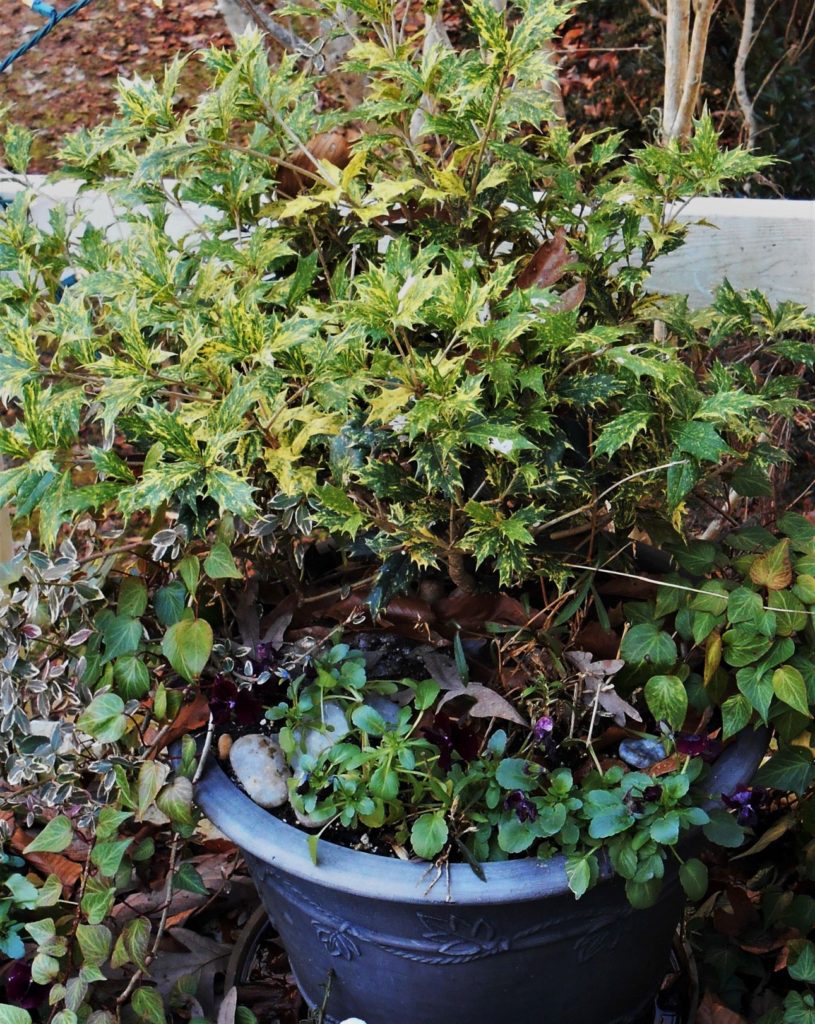
Osmanthus ‘Goshiki’ looks a bit like holly, and is a popular potted holiday plant gift. It has variegated chartreuse and cream leaves.
You will find other potted shrubs offered as ‘table-top Christmas trees,’ often wrapped in foil and decorated. Alberta Spruce, Norfolk Island pine, rosemary, English holly and Osmanthus ‘Goshiki’ fill local nurseries, big box stores and grocery stores. They will be discounted after Christmas. Care for all these shrubs just as you would a lemon cypress, and they will reward you with years of beauty.
The exception is the Norfolk Island Pine, Araucaria heterophylla, which is native to an island near New Zealand, and isn’t hardy in our climate. Grow this tree indoors in a cool, bright room in winter. You can move the pot outdoors into partial shade in the spring, if you wish, or keep it indoors in bright light. Move the tree into larger pots as its roots develop, or root prune every few years to control growth and keep it in the same container. In the wild, these trees will grow to more than 100’ tall. It can grow as tall as your ceiling indoors. Make sure the soil drains well and never allow the tree to sit in standing water.
Bring your Norfolk Island pine (this isn’t really a pine) indoors before nighttime temperatures drop below 40F. This tree makes an excellent living Christmas tree and is easy to decorate. Check newly purchased trees for any coating or paint on its needles, and wipe this off with a damp cloth. The spray interferes with photosynthesis.
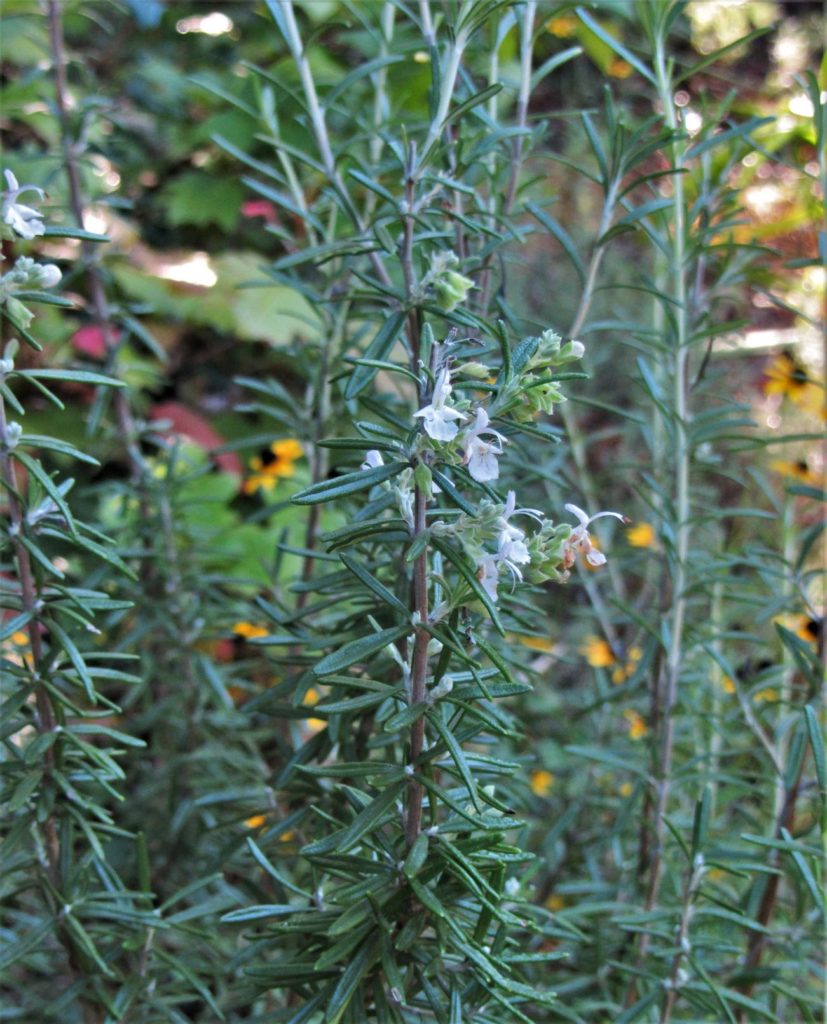
Rosemary is a fragrant, long-lived woody shrub that often blooms during the winter. Find it as a potted topiary for holiday gifts each December. Snip it frequently to use for cooking.
Rosemary, Salvia Rosmarinus, a culinary herb, appears in shops as a potted topiary each December. Trimmed into the shape of a Christmas tree, often trimmed with red ribbons, this hardy shrub has a future once you remove the ribbons and foil wrappings.
After the holidays: Keep rosemary in bright light near a window indoors, or move it to a bright, sheltered location outside. Grow rosemary by the kitchen door for easy access to fresh herbs for cooking. It will grow equally well in a pot or in the ground. Most varieties are hardy to Zones 7 or 8.
How to kill it: Kill rosemary by overwatering, making it sit in wet soil that doesn’t drain, or by keeping it in the dark. It doesn’t survive well indoors unless you can give it plenty of light and good air circulation.
Tender Perennials
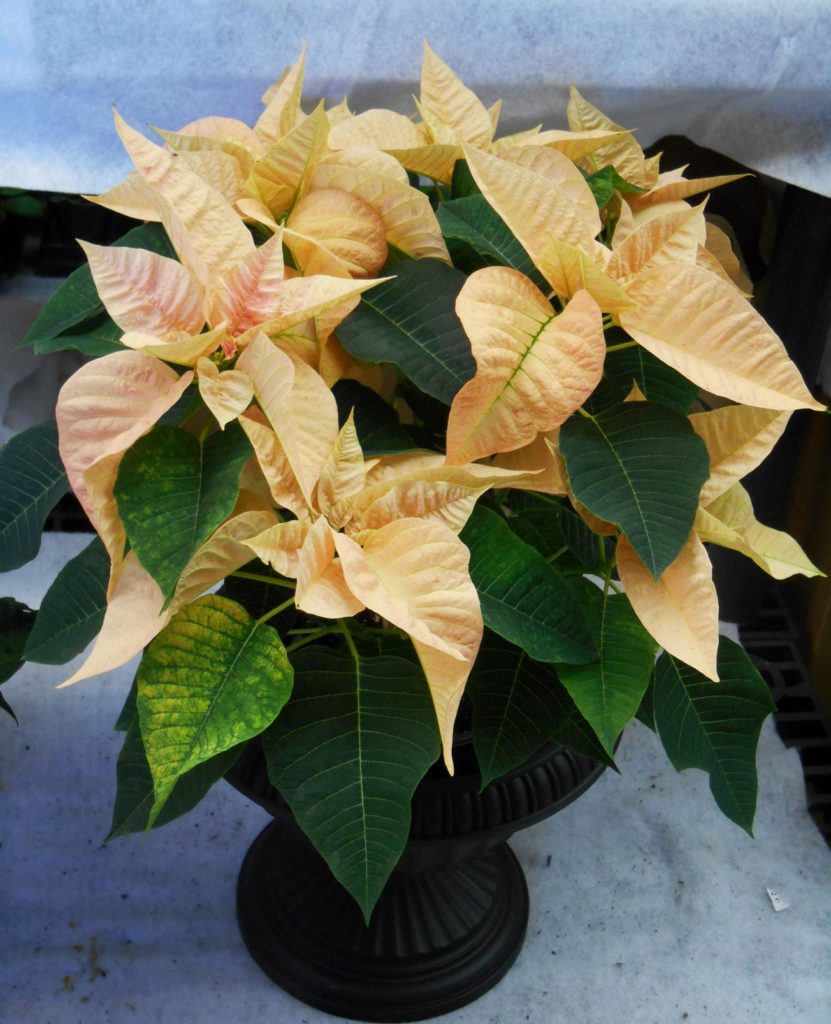
Poinsettia flowers are tiny and yellow. Find them in the middle of the colorful leaves known as bracts. This plant is on display at the Homestead Garden Center.
Poinsettia, Euphorbia pulcherrima, native to Mexico and Central America, grows as a shrub or small tree in the dry tropical forests of its home. While most poinsettias purchased at the holidays don’t live very long, you can keep yours from year to year when you understand its needs.
First, remove the foil wrapping as soon as possible. Remember that roots need to breathe, too. Keep the plant evenly moist, in bright light, and away from sources of heat. It will appreciate a cool spot, especially at night. If your plant starts to drop its leaves, check the soil, move it out of any drafts, and offer more light.
After the holidays: Prune each branch below the colorful bracts and tiny yellow flowers to just above a joint, or node. This is a good time to move the plant into a roomier pot with some fresh soil. Choose an attractive clay pot or other container a few inches larger than its nursery pot. Fertilize with any all-purpose liquid house plant fertilizer, or sprinkle with Osmocote. Keep the plant evenly moist and provide 6-8 hours of bright light each day.
Once temperatures remain above freezing in the spring, you can move the plant outside to a sheltered location. As it adjusts to life outside, you can increase the amount of sun and wind your poinsettia gets but watch for signs of too much afternoon sun. Poinsettias grow vigorously in good conditions. All of its summer leaves will be green. When you move the plant back indoors in autumn, before the first frost, move it to a room without artificial evening light. Shorter days trigger it to form colorful bracts and flowers in late autumn. Once it has grown its ‘flowers’ again in early winter, you can move the poinsettia back into a lit area for display.
How to kill it: Kill your poinsettia by letting it sit in stagnant water, by keeping it under a heat vent, or by putting it outside to freeze. You can also kill a poinsettia by forgetting to water it for a very long time.
Florist’s Cyclamen, Cyclamen persicum, is another tender perennial (hardy in Zones 9-11) offered as a houseplant each winter. Like poinsettias, it prefers a bright, cool location and evenly moist soil. Each of its leaves and flowers grows from a tuber, found just under the soil. The tuber will produce leaves and flowers for several months, before entering a period of dormancy in summer. It will live year to year, growing larger and producing more flowers each year.
Cyclamen is happiest growing on a cool, bright windowsill. Remove the foil wrapping, and re-pot into a more attractive container or slip the plastic nursery pot into a basket or other container.
After the holidays: Offer liquid fertilizer every few weeks to keep the plant in active growth through the winter. In early summer, you’ll notice the plant slows down as it prepares to go dormant. It may go fully dormant, or it may just produce fewer leaves and stop flowering for a while. It will be happiest in a very cool, but bright location. If all of the leaves fade, stop watering and set the pot into a cool, dark area for summer storage. Begin watering again in early autumn and watch for new growth poking through the soil. Move your Cyclamen back to its sunny windowsill. You may need to repot every few years as the tuber grows.
How to kill it: Kill a Cyclamen by letting it freeze or making it sit in a puddle of stagnant water. If you forget to water and its leaves droop over, you can save it by setting the pot in a bowl of warm water long enough for the soil and roots to re-hydrate. Growing a Cyclamen under a heat vent, or with too much afternoon sun, can also send it into decline.
Amaryllis bulbs make an easy, inexpensive gift or holiday decoration. I’m growing some dipped in wax for the first time this year. You simply set these in bright light and watch the show as they produce multiple stems topped with bright flowers.
These South African natives are hardy in more tropical climates. Some varieties of Amaryllis are hardy as far north as zones 7 or 8 and may be grown out of doors in the garden year-round in our area. When in doubt, look for more information on the species you are growing.
Most Amaryllis sold in boxes at grocery and big-box stores are too tender to grow outdoors in Virginia. Treat these as tender perennials after their first winter bloom. Pot the bare bulb into a 6” clay pot with good potting soil. Allow about half the bulb to show above the soil line. Or, mass several bulbs in a larger, shallow container to create a stunning tabletop display. You can interplant the bulbs with small ferns, florist Cyclamen, moss, or other small plants and mulch with pea gravel or glass for an elegant, polished look. The Amaryllis may need staking as they grow, particularly if you grow them away from strong light.
Amaryllis begin to grow almost immediately, even before they grow roots. Once potted, keep the plants evenly moist. Amaryllis may also be ‘potted’ in a wide mouthed glass vase filled with a combination of sand, gravel, marbles and water. Allow about half the bulb to extend above the aggregate and water. You may add a little dilute water-soluble fertilizer or hydroponic solution to the water in the vase for more vigorous growth.
After the holidays: Cut away spent flowers as they fade. Leaves follow the flowers and are important to fuel the bulb for next year’s show. Allow the leaves to grow until they begin to die back in early summer. The bulb can be stored dry, or it can be left in potting soil through the summer months.
How to kill it: Kill an Amaryllis by chopping off its leaves or by letting a tender bulb freeze. You can also stop watering and caring for it while it is still growing.
Many Amaryllis bulbs are probably thrown away after they bloom. But they will grow bigger and better each year with proper care. Once my wax coated bulbs finish blooming, I’m going to peel away the wax and plant them, hoping to keep them growing for another year.

Selaginella kraussiana ‘Frosty Fern’ with assorted tropical ferns. Planting this way helps increase humidity for the plants.
The ‘Frosty Fern,’ Selaginella kraussiana ‘Aurea,’ isn’t really a fern or a moss. It as a vascular plant known as a spike moss that doesn’t bloom. An African native, it may be grown as a shade loving tender perennial in our region. The main challenge with growing ‘Frosty Fern’ as a houseplant lies in providing sufficient humidity in our heated winter homes. Frequent misting keeps them happy.
Remove your ‘Frosty Fern’ from its foil wrapped nursery pot and pot it into a more attractive container. It will grow well in the bottom of a glass vase terrarium style, or it can be used in a mixed planting with Amaryllis bulbs, Cyclamen, or even planted under poinsettias. It is best used as a ground cover plant. You could plant several in a large, shallow container with mosses or other small ferns.
After the holidays: Keep your spike moss moist and in medium light indoors through the winter. Move your spike moss outside in the spring and grow it in deep shade. Keep it evenly moist and watch it spread. Spike moss can be divided into additional plants, and stem cuttings will root.
How to kill it: Most ‘Frosty Ferns’ fail due to lack of humidity or because their soil dries out. Like true mosses, they require moisture, even though spike mosses have roots and a vascular system. Full sun outside will also do the job.
These are just a few of the many plants tempting us each winter. Forced bulbs will be available for the next several months. After forcing, most will need a few years to build up the energy to bloom again, even if you plant them and care for their leaves after blooming. Some people plant them, others just throw them away.
Hellebores are never happy for long indoors. Plant them outside in pots or beds. Check the label on the Helleborus species you buy, as some may not be hardy in Zone 7. With a little extra protection, in a sheltered area near your home, they will probably survive just fine.
Tropical foliage plants, like Philodendrons, Alocasias, many ferns, and peace lilies grow well indoors year-round. Give them light, moisture and love, and you can keep your holiday plants alive for many years of growing pleasure. Other flowering plants, like Begonias, may be forced to bloom for the holiday season. Care for them, and they will bloom for you again next spring.
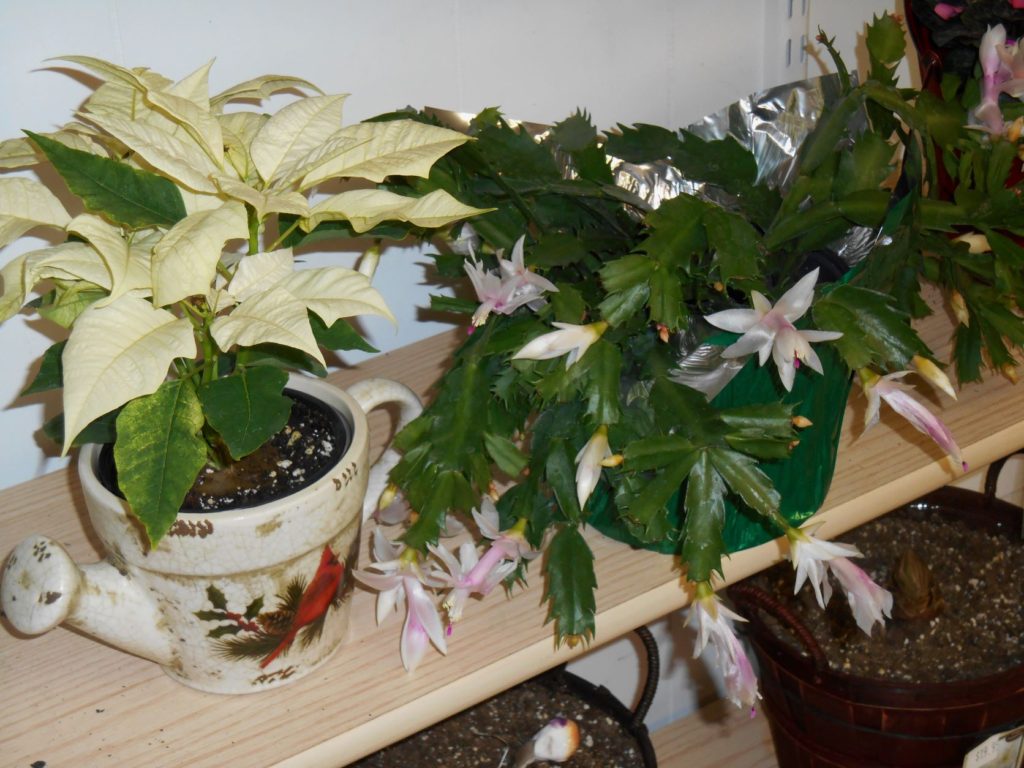
White poinsettia is displayed with Christmas cactus and bulbs at the Homestead Garden Center. Fertilize Christmas cactus after the first flush of blooms, give it night time darkness, and watch it bloom again and again through the winter.
Flowering Christmas cactus grow easily. Darkness triggers bud set, so treat them like a poinsettia for years of abundant flowers. Reading the tag on a new plant, and following the tips above you will likely keep your holiday plants beautiful and happy through until spring.
Buying plants in winter can give you a head start on spring planting. Buy them small now, grow them on for a few months, and you’ll have a real beauty to move out to your patio or porch by May.
All Photos by Elizabeth McCoy
Elizabeth McCoy is a class of 2018 Master Gardener Tree Steward

